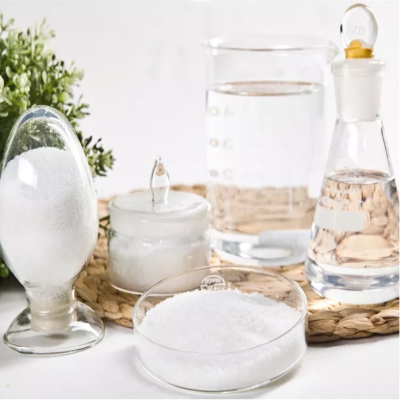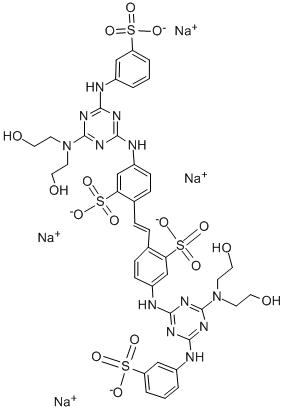-
Categories
-
Pharmaceutical Intermediates
-
Active Pharmaceutical Ingredients
-
Food Additives
- Industrial Coatings
- Agrochemicals
- Dyes and Pigments
- Surfactant
- Flavors and Fragrances
- Chemical Reagents
- Catalyst and Auxiliary
- Natural Products
- Inorganic Chemistry
-
Organic Chemistry
-
Biochemical Engineering
- Analytical Chemistry
- Cosmetic Ingredient
-
Pharmaceutical Intermediates
Promotion
ECHEMI Mall
Wholesale
Weekly Price
Exhibition
News
-
Trade Service
The so-called "plastic modification" refers to the method of adding one or more other substances to the plastic resin to change its original performance, improve one or more aspects, and thus achieve the purpose of expanding its scope of application
.
Modified plastic materials are collectively referred to as "modified plastics".
The production process of modified plastics is as follows:? Plastic modification methods roughly include the following types: 1.
Reinforcement: by adding fibrous or flake fillers such as glass fiber, carbon fiber, and mica powder To achieve the purpose of increasing the rigidity and strength of materials, such as glass fiber reinforced nylon used in power tools
.
2.
Toughening: The purpose of improving the toughness/impact strength of plastics is achieved by adding rubber, thermoplastic elastomers and other substances to plastics, such as toughened polypropylene commonly found in automobiles, home appliances and industrial applications
.
3.
Blending: uniformly mix two or more incompletely compatible polymer materials into a macro-compatible and micro-phase-separated mixture to meet certain requirements in terms of physical and mechanical properties, optical properties, and processing properties.
The required method
.
4.
Alloy: Similar to blending, but with good compatibility between components, it is easy to form a homogeneous system, and certain properties that cannot be achieved by a single component, such as PC/abs alloy, or PS modified PPO, can be obtained
.
5.
Filling: The purpose of improving physical and mechanical properties or reducing costs is achieved by adding fillers to the plastic
.
6.
Other modifications: such as using conductive fillers to reduce the electrical resistivity of plastics; adding antioxidants/light stabilizers to improve the weather resistance of the materials; adding pigments/dyes to change the color of the material, adding internal/external lubricants to make the material The processing performance of the semi-crystalline plastic is improved, the nucleating agent is used to change the crystalline characteristics of the semi-crystalline plastic to improve its mechanical and optical properties, and so on
.
In addition to the above physical modification methods, there are also methods to modify plastics by chemical reactions to obtain specific properties, such as maleic anhydride grafted polyolefin, polyethylene crosslinking, and the use of peroxides in the textile industry.
degradation of the resin to improve the flow properties / fiber-forming properties
.
.
Modified plastic materials are collectively referred to as "modified plastics".
The production process of modified plastics is as follows:? Plastic modification methods roughly include the following types: 1.
Reinforcement: by adding fibrous or flake fillers such as glass fiber, carbon fiber, and mica powder To achieve the purpose of increasing the rigidity and strength of materials, such as glass fiber reinforced nylon used in power tools
.
2.
Toughening: The purpose of improving the toughness/impact strength of plastics is achieved by adding rubber, thermoplastic elastomers and other substances to plastics, such as toughened polypropylene commonly found in automobiles, home appliances and industrial applications
.
3.
Blending: uniformly mix two or more incompletely compatible polymer materials into a macro-compatible and micro-phase-separated mixture to meet certain requirements in terms of physical and mechanical properties, optical properties, and processing properties.
The required method
.
4.
Alloy: Similar to blending, but with good compatibility between components, it is easy to form a homogeneous system, and certain properties that cannot be achieved by a single component, such as PC/abs alloy, or PS modified PPO, can be obtained
.
5.
Filling: The purpose of improving physical and mechanical properties or reducing costs is achieved by adding fillers to the plastic
.
6.
Other modifications: such as using conductive fillers to reduce the electrical resistivity of plastics; adding antioxidants/light stabilizers to improve the weather resistance of the materials; adding pigments/dyes to change the color of the material, adding internal/external lubricants to make the material The processing performance of the semi-crystalline plastic is improved, the nucleating agent is used to change the crystalline characteristics of the semi-crystalline plastic to improve its mechanical and optical properties, and so on
.
In addition to the above physical modification methods, there are also methods to modify plastics by chemical reactions to obtain specific properties, such as maleic anhydride grafted polyolefin, polyethylene crosslinking, and the use of peroxides in the textile industry.
degradation of the resin to improve the flow properties / fiber-forming properties
.






